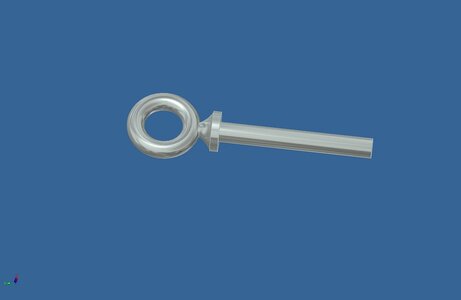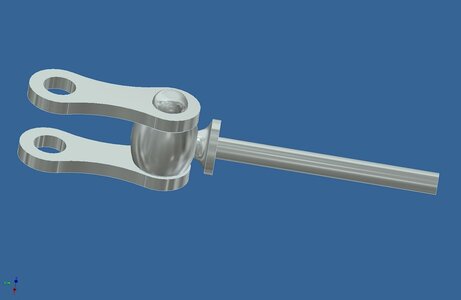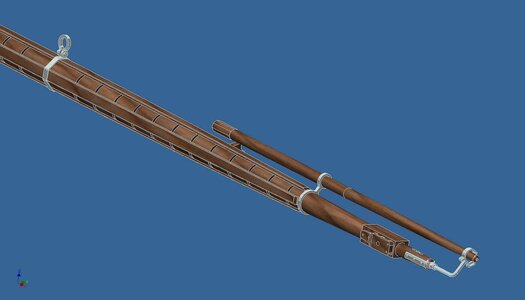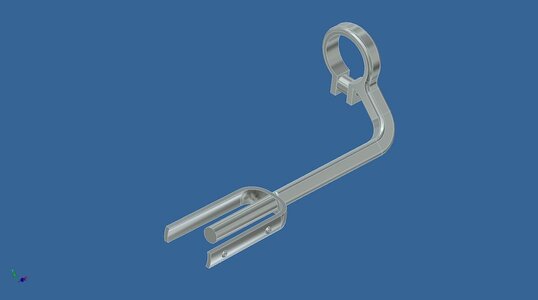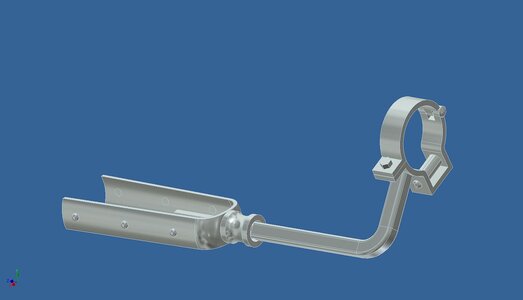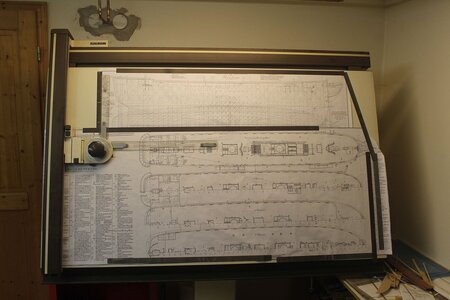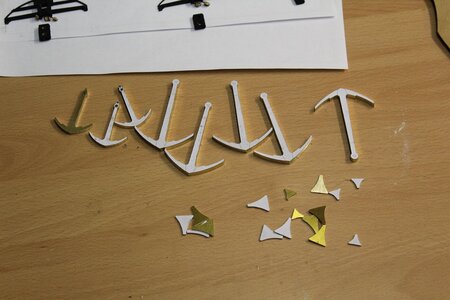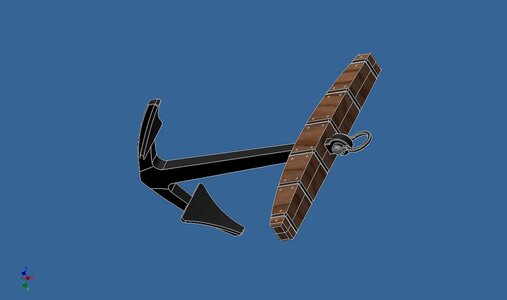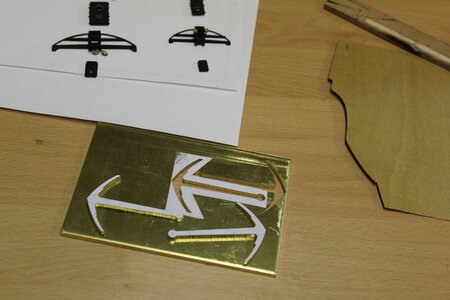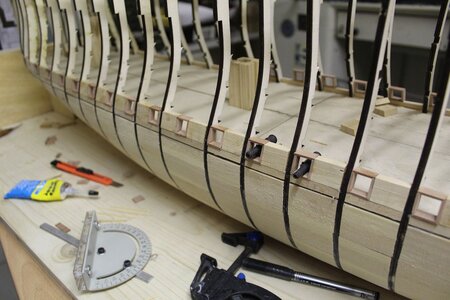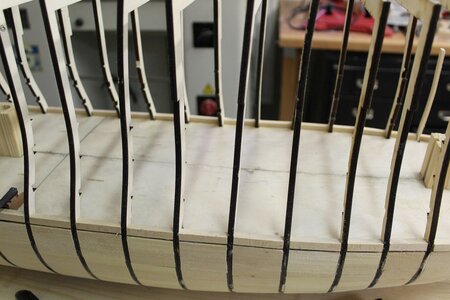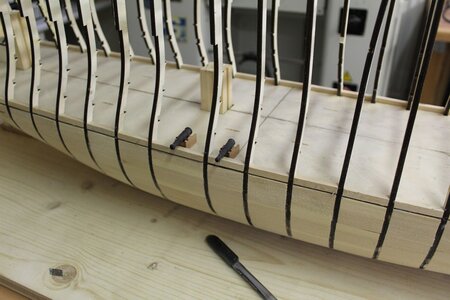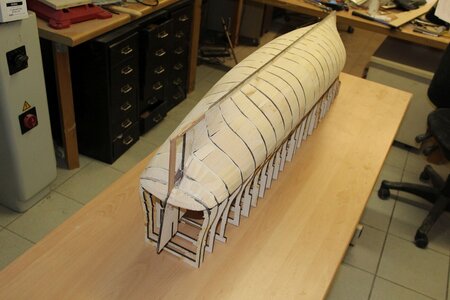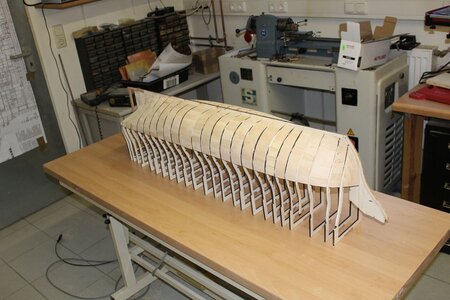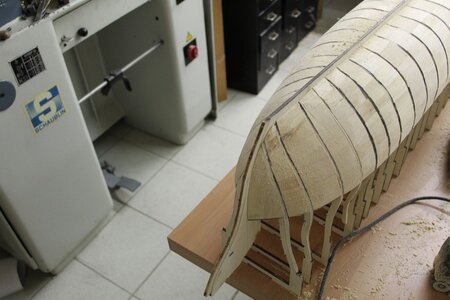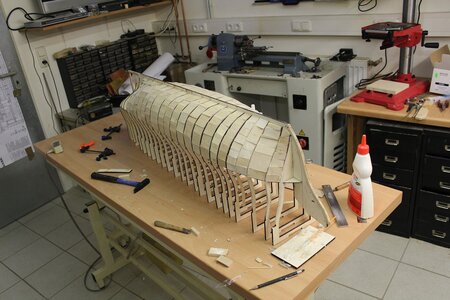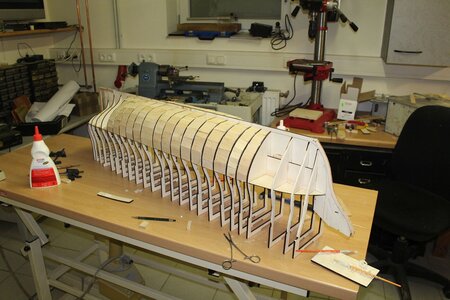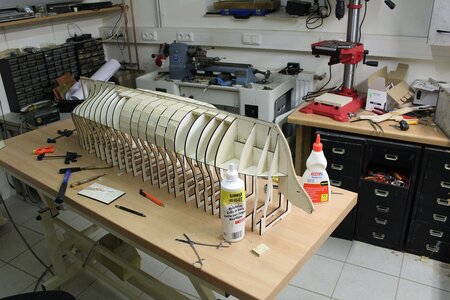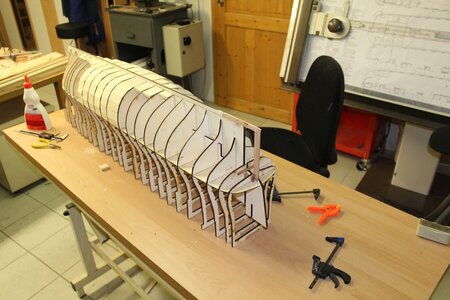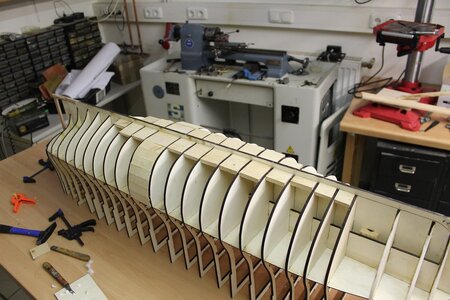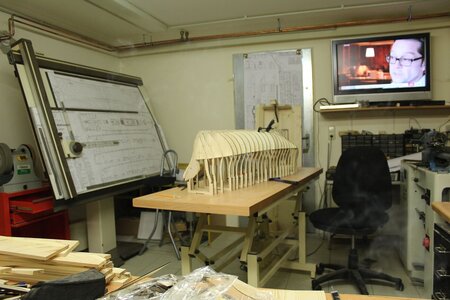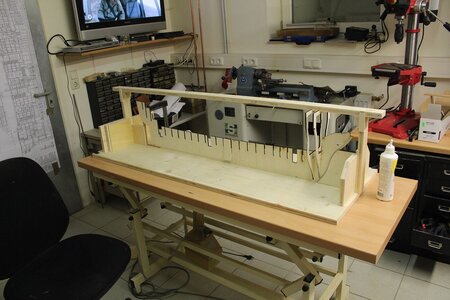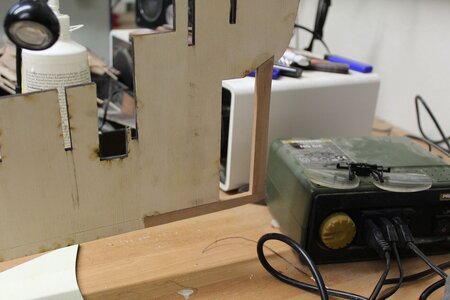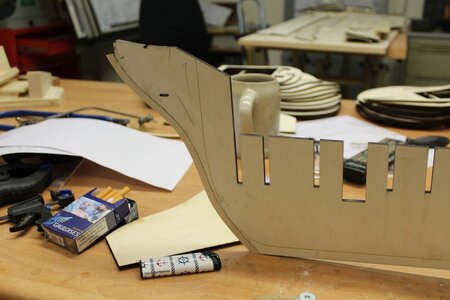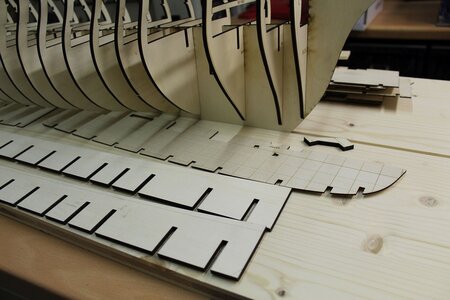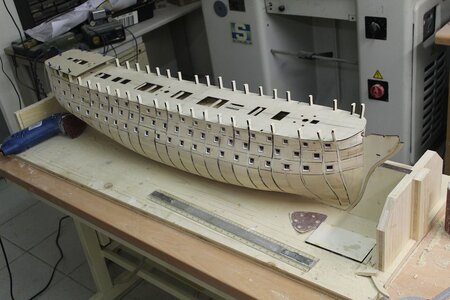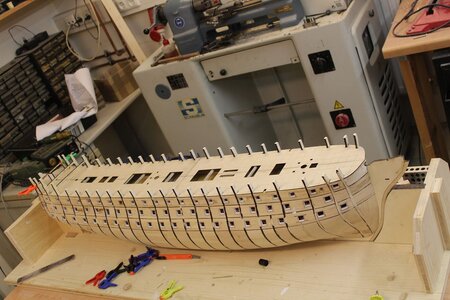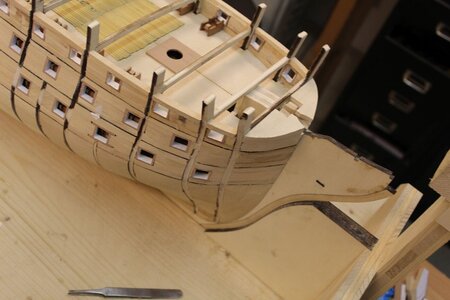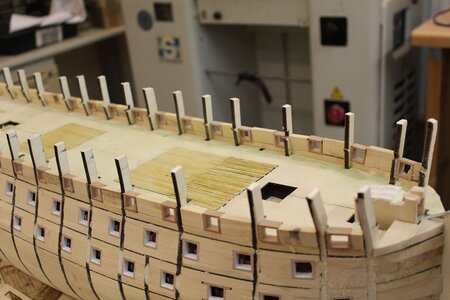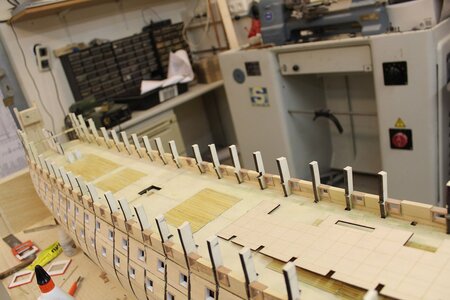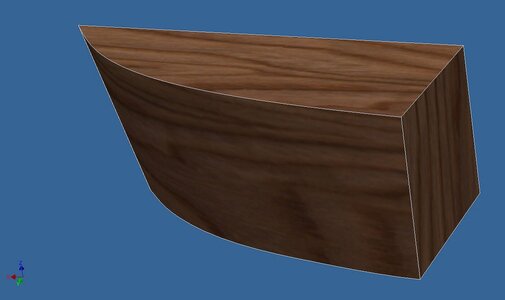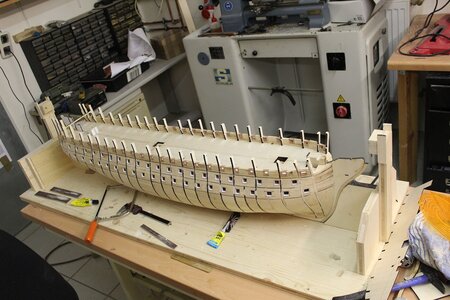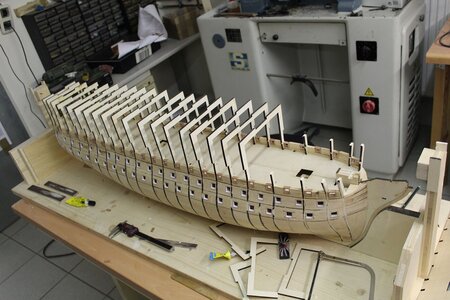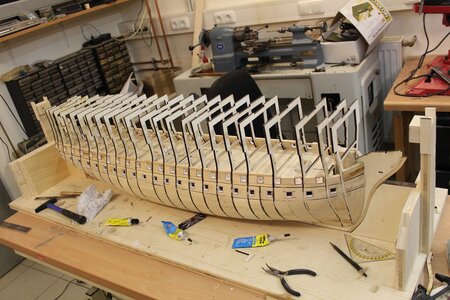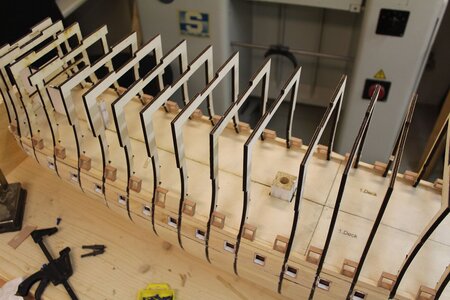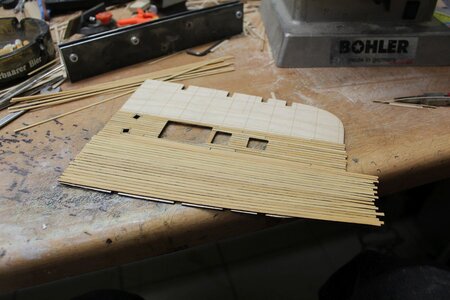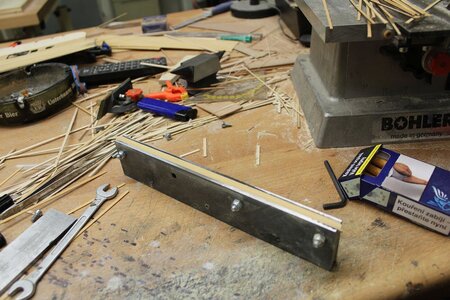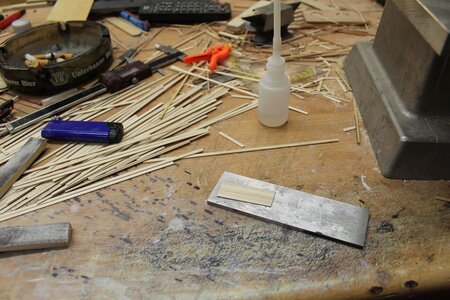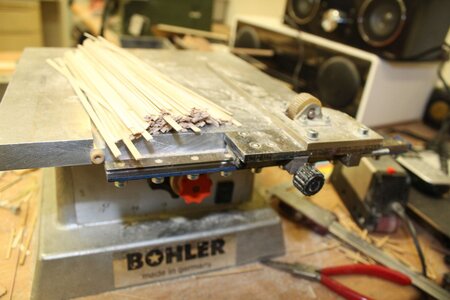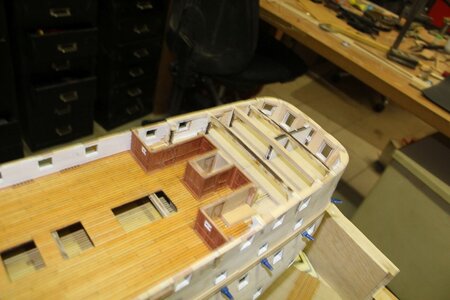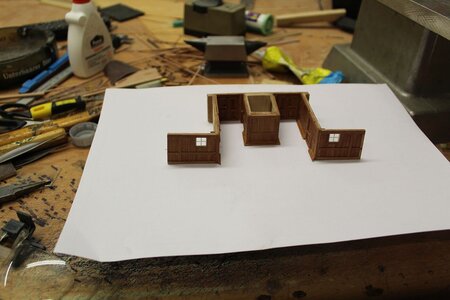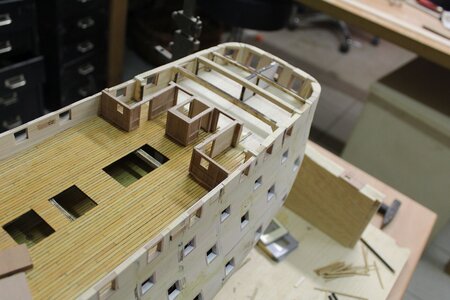Ich beginne hier die Vorstellung der Bretagne.
Deren Bau war ein letztes Aufbäumen der Konstrukteure der hölzernen Riesen. Mit dem Aufkommen der Sprenggranaten waren sie veraltet und nur noch bedingt brauchbar.
Die Bretagne litt noch unter einem weiteren Übel. Anscheinend haben die Schiffbauer dem Konstrukteuren nicht getraut, hinsichtlich der ungewöhnlichen Größe und der Länge von 81 m in der Wasserlinie und den Rumpf zu schwer ausgeführt. Der Rumpf tauchte zu tief ein und die Höhe der I. Batterie zum Wasser war um 3/4 m geringer als geplant. In der Praxis, ein Segelschiff liegt immer schräg im Wind. Die unteren Leepforten konnten nur im günstigsten Fall geöffnet werden. Trotz der größeren Verdrängung und den 40 Kanonen mehr, war die Kampfkraft geringer, als die, der Napoleon-Klasse.
Warum also baue ich dieses Schiff?
Es gibt noch kein Modell,
die Pläne des Atlas sind hinreichend,
die Ausführung ist weitgehend wie bei der Napoleon.
Die Verbesserungen sind gut dokumentiert.
Ich kann das Modell also weitgehend stimmig mit dem Original bauen.
Zu jener Zeit lag ich monatelang mit einem gebrochenen Fuß im Krankenhaus und habe letztlich den Fuß verloren. Als Privatpatient hatte ich ein Einzelzimmer und konnte mir einen Großen Tisch aufstellen lassen. Die Pläne des Archivs hatte ich mir schon vor dem Unfall im Maßstab 1:75 kopieren lassen.
Die 3D-Konstruktion und die Zeichnungsableitung geschah also weitgehend im Krankenhaus.
Nun zur Konstruktion:
google translation:
I begin here the presentation of Bretagne.
Their construction was a last stand of the designers of the wooden giants. With the advent of explosive shells, they were obsolete and of limited use.
Brittany suffered from yet another malady. Apparently, the shipbuilders did not trust the designers, regarding the unusual size and the length of 81 m in the waterline and executed the hull too heavy. The hull dipped too low and the height of the I battery to the water was 3/4 m less than planned. In practice, a sailing ship always lies diagonally in the wind. The lower leeboards could be opened only in the best case. Despite the larger displacement and the 40 guns more, the combat power was less than that, of the Napoleon class.
So why build this ship?
There is no model yet,
the plans of the Atlas are sufficient,
the design is largely the same as the Napoleon.
The improvements are well documented.
So I can build the model largely consistent with the original.
At the time, I was hospitalized for months with a broken foot and ultimately lost the foot. As a private patient, I had a single room and was able to have a large table set up. I had already had the plans of the archive copied at a scale of 1:75 before the accident.
So the 3D design and drawing derivation largely happened in the hospital.
Now to the construction:
Translated with www.DeepL.com/Translator (free version)

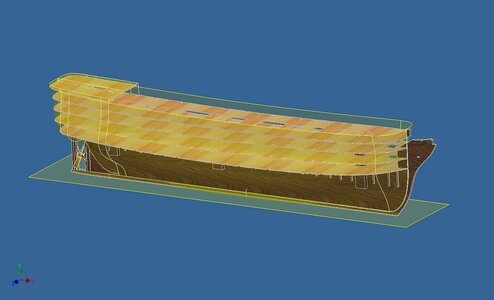

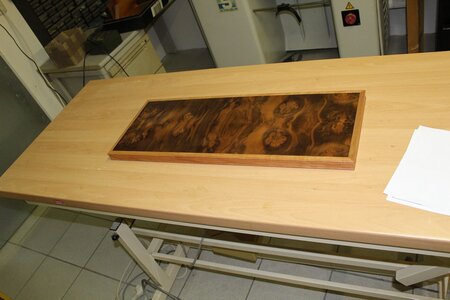

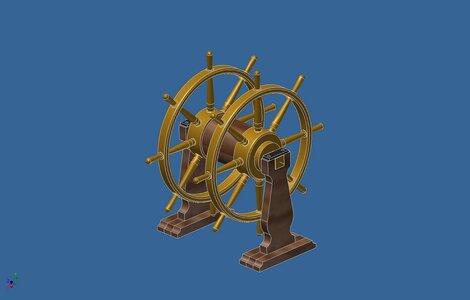
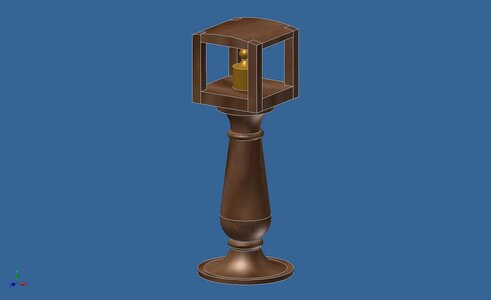

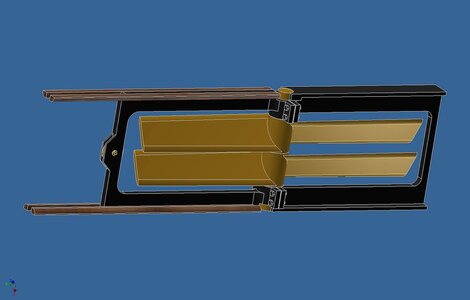
Deren Bau war ein letztes Aufbäumen der Konstrukteure der hölzernen Riesen. Mit dem Aufkommen der Sprenggranaten waren sie veraltet und nur noch bedingt brauchbar.
Die Bretagne litt noch unter einem weiteren Übel. Anscheinend haben die Schiffbauer dem Konstrukteuren nicht getraut, hinsichtlich der ungewöhnlichen Größe und der Länge von 81 m in der Wasserlinie und den Rumpf zu schwer ausgeführt. Der Rumpf tauchte zu tief ein und die Höhe der I. Batterie zum Wasser war um 3/4 m geringer als geplant. In der Praxis, ein Segelschiff liegt immer schräg im Wind. Die unteren Leepforten konnten nur im günstigsten Fall geöffnet werden. Trotz der größeren Verdrängung und den 40 Kanonen mehr, war die Kampfkraft geringer, als die, der Napoleon-Klasse.
Warum also baue ich dieses Schiff?
Es gibt noch kein Modell,
die Pläne des Atlas sind hinreichend,
die Ausführung ist weitgehend wie bei der Napoleon.
Die Verbesserungen sind gut dokumentiert.
Ich kann das Modell also weitgehend stimmig mit dem Original bauen.
Zu jener Zeit lag ich monatelang mit einem gebrochenen Fuß im Krankenhaus und habe letztlich den Fuß verloren. Als Privatpatient hatte ich ein Einzelzimmer und konnte mir einen Großen Tisch aufstellen lassen. Die Pläne des Archivs hatte ich mir schon vor dem Unfall im Maßstab 1:75 kopieren lassen.
Die 3D-Konstruktion und die Zeichnungsableitung geschah also weitgehend im Krankenhaus.
Nun zur Konstruktion:
google translation:
I begin here the presentation of Bretagne.
Their construction was a last stand of the designers of the wooden giants. With the advent of explosive shells, they were obsolete and of limited use.
Brittany suffered from yet another malady. Apparently, the shipbuilders did not trust the designers, regarding the unusual size and the length of 81 m in the waterline and executed the hull too heavy. The hull dipped too low and the height of the I battery to the water was 3/4 m less than planned. In practice, a sailing ship always lies diagonally in the wind. The lower leeboards could be opened only in the best case. Despite the larger displacement and the 40 guns more, the combat power was less than that, of the Napoleon class.
So why build this ship?
There is no model yet,
the plans of the Atlas are sufficient,
the design is largely the same as the Napoleon.
The improvements are well documented.
So I can build the model largely consistent with the original.
At the time, I was hospitalized for months with a broken foot and ultimately lost the foot. As a private patient, I had a single room and was able to have a large table set up. I had already had the plans of the archive copied at a scale of 1:75 before the accident.
So the 3D design and drawing derivation largely happened in the hospital.
Now to the construction:
Translated with www.DeepL.com/Translator (free version)









Last edited by a moderator:




